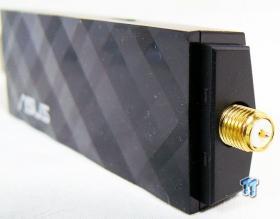
- #ASUS USB AC56 TWEAKS HOW TO#
- #ASUS USB AC56 TWEAKS DRIVERS#
- #ASUS USB AC56 TWEAKS WINDOWS 10#
- #ASUS USB AC56 TWEAKS WINDOWS 7#
Select to Create a New Wireless Network Among Computers (AdHoc):įill the network name: theBUS_PaPaNET, select: no security
#ASUS USB AC56 TWEAKS DRIVERS#
The procedure expects all the drivers are installed properly and you see the network adapter in your network devices. The procedure for interfacing the SSP platform through WiFi is as follows: Set up an AddHoc network:Īccess the Center for Network Connections and Sharing:
#ASUS USB AC56 TWEAKS HOW TO#
This is the description how to set up the ad hoc network for SSP project under Windows 7.
#ASUS USB AC56 TWEAKS WINDOWS 10#
To find the problem in HW under Windows 10 was pain in the ass because all these adapters works flawlesly under Windows 7.
#ASUS USB AC56 TWEAKS WINDOWS 7#
To disconnect can be performed by: netsh wlan disconnect interface=" Wi-Fi 5"Īnd to delete the profile will be done through: netsh wlan delete profile theBUS_PaPaNET AdHoc setting for SSP project under Windows 7 Now, we are ready to connect to the ad hoc network through command: netsh wlan connect name= theBUS_PaPaNET ssid= theBUS_PaPaNET interface=" Wi-Fi 5" Clean up Profile " theBUS_PaPaNET" on interface "Wi-Fi 5" updated successfully. The command shoud end with a note “updated sucessfully” as it is depicted here: C:\WINDOWS\system32>netsh wlan set profileparameter name= theBUS_PaPaNET ssid= theBUS_PaPaNET connectiontype=ibss interface=" Wi-Fi 5" It will be done by: netsh wlan set profileparameter name= theBUS_PaPaNET ssid= theBUS_PaPaNET connectiontype=ibss interface=" Wi-Fi 5" First of all, we need to change the type of the network to “ad hoc”, eg. Network broadcast : Connect only if this network is broadcastingĪutoSwitch : Do not switch to other networksĬonnection is performed through Command line shell (cmd.exe). Profile theBUS_PaPaNET on interface InterniWiFi: C:\WINDOWS\system32> netsh wlan show profiles theBUS_PaPaNET IMPORTANT: every USB WiFi card is designated by its name – in this case “ InterniWiFi“, for internal WiFi card (Intel) of my laptop. The actual settings of the XML profile file can be listed throug netsh command in a Command prompt (Admin – cmd.exe) – see below. These steps will create a XML profile file for the selected SSID which has the same name: theBUS_PaPaNET. You have to uncheck “Start this connection automatically”, then click “Next”, and “Close”. The SSID for SSP project is theBUS_PaPaNET with no security. In “Network and Sharing Center” select “Set up a new connection or network” manually: “Manually connect to a wireless network”. The most important information is: In Windows 10 not all usb network cards support the ad hoc mode! My own research through different USB to Wifi adapters (these adapters I was able to personally test) shows these results: USB Adapter AdHoc setting for SSP project under Windows 10 Cape Town: South African National Space Agency (SANSA), 2011, p. In 62nd International Astronautical Congress. – Batěk, M.: Small Satellite Systems Control for University Curriculum. The information in this tutorial are used in Small Satellite Project which is described in (please cite): The last part of the article describes IP settings for the SSP project.ĭid you find any of the information published here useful? Then look at Donate page.

This article describes the ad hoc creation proces under Windows 10 (and 8 and 8.1) as extension to the process used for Windows 7. Finally with help of the Command line it works.


The Small Satellite Platform project uses AdHoc networking which was easy to set up under Windows 7 but it proved to be nightmare to set it up under Windows 10.


 0 kommentar(er)
0 kommentar(er)
